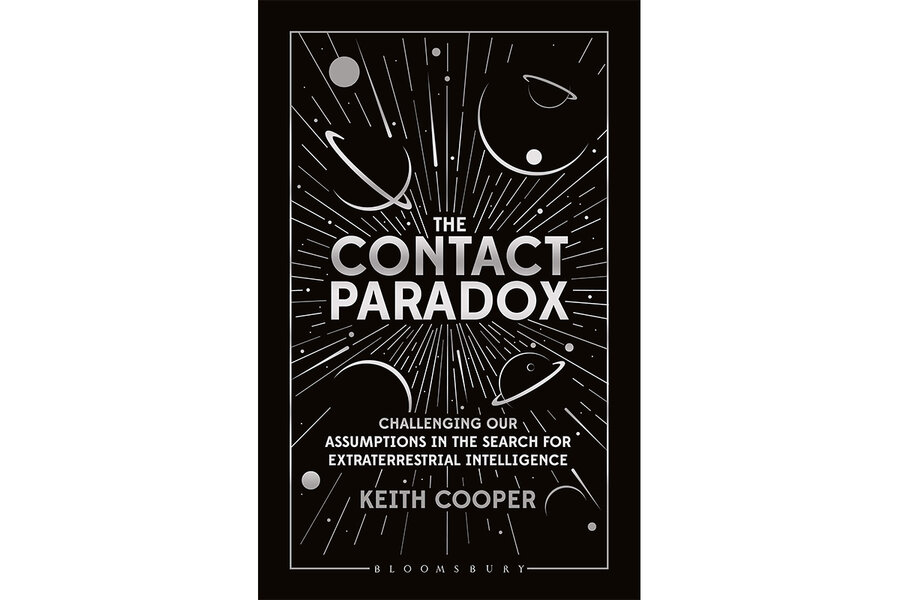‘The Contact Paradox’ sums up the search for extraterrestrials
Loading...
There’s a name that keeps cropping up throughout “The Contact Paradox: Challenging Our Assumptions in the Search for Extraterrestrial Intelligence,” Keith Cooper’s fantastic entry in the Bloomsbury Sigma series of science-related titles. It’s Frank Drake, the American astronomer and astrophysicist who in 1961 came up with the thought experiment known as the Drake Equation, a very rough series of estimations about the various factors Drake considered necessary for an advanced civilization to develop.
The rate at which stars develop in the Milky Way, the number of those stars that have planets, the number of those planets that are suitable for life (neither too hot nor too cold for liquid water), the number that then develop life, the fraction of those species that achieve sentience and advanced technology - Drake layered these factors in an attempt to handicap the possibility that intelligent life might exist somewhere else in the universe.
As Cooper elaborates, Drake was one of the earliest architects of the search for extraterrestrial intelligence (SETI) and a strong proponent of calling out into the interstellar void in hopes that somebody would answer. “The need to reach out and find others in the Universe comes from deep within ourselves,” Cooper writes. “As a species we feel alone in the cosmos; part of the reason we search is to find someone else like us, whom we can perhaps relate to.”
A key narrative thread running through “The Contact Paradox” is caution: a century of science fiction notwithstanding, humans would certainly not be able to “relate” to any species that could develop the technology to respond to Earth, let alone reach Earth. Such beings will be products of an entirely different biome, inheritors of an unthinkably different set of historical factors - and, as Cooper mentions over and over, it’s probably more than a little delusional for humans to think any such First Contact will be friendly. When Drake himself beamed a message to a distant star cluster in 1974, Nobel Prize-winning physicist Martin Ryle angrily upbraided him for taking it upon himself to reveal Earth’s presence to a broader galaxy that might be full of predators.
As Cooper points out, much of this comes down to a question of altruism – the ability, the willingness, of some individuals (regardless of species) to sublimate their own personal interests in order to prioritize the personal interests of others. At first it seems a curious emphasis, but Cooper’s elaboration makes sense: For all we know, anything we’d recognize as altruism is a fluke, another specific outcome of the singular biome of Earth.
For decades, an idea animating science fiction was that Earth is a cosmic oasis. “How many rabid, slathering aliens have invaded Earth in hackneyed science-fiction B-movies to steal both water and women?” Cooper writes. “The implication is that Earth is somehow an oasis in the middle of a desert, a rare world of liquid in a galaxy of baked planets.” The more that actual science reveals about the galaxy, the more flawed this implication seems. Water is abundant outside of Earth. There may be no pressing resource needs driving aliens to come prospecting.
But the essence of “The Contact Paradox” is that if aliens do come calling, and if they’re anything like us, humanity is in trouble. The encounter would likely not go well, if history is any guide. First contacts between wildly varying human societies have frequently been characterized by violence, exploitation, slavery, and sometimes genocide. “Contact is dangerous, and metaphorically screaming into a silent and possibly dangerous jungle without knowing what lives in that jungle might be unwise,” Cooper warns. “While history cannot tell us what will happen if and when we make contact with an extraterrestrial civilisation, it can provide some handy signposts for what might happen, and we ignore history at our peril.”
Earth has been broadcasting electromagnetic signals for a century and sending out mechanical probes – five of which have now left the solar system – for well over half a century. And despite countless science fiction cautionary tales, humans are still reflexively eager to meet sentient alien life. Those enthusiasts should read “The Contact Paradox” before laying out the welcome mat.








